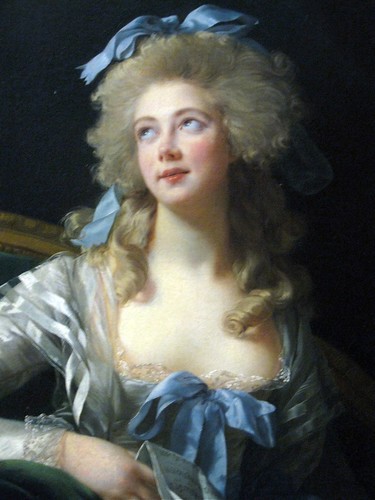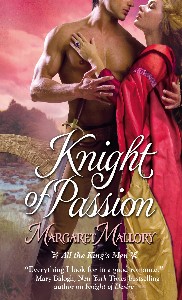 Kris KennedyThe Irish WarriorInhibited, accountant-minded Senna de Valery comes to Ireland to finalize a deal that will save her faltering wool business. What she gets instead is a cunning English lord with dangerous ulterior motives.
Kris KennedyThe Irish WarriorInhibited, accountant-minded Senna de Valery comes to Ireland to finalize a deal that will save her faltering wool business. What she gets instead is a cunning English lord with dangerous ulterior motives. Forced to rely on her wits, not her ledgers, Senna frees an Irish warrior chained in the prisons, and together they flee across the war-torn land of medieval Ireland. But Finian O’Melaghlin is much more than a charming, roguish warrior. He is councilor to his king, on a grave mission to recover military secrets, and has a dangerous agenda of his own.
Neither is prepared for the powerful forces arrayed against them …
Neither can resist the fiery passion igniting between them …
Neither can imagine the sacrifices they will face, nor the choices they will be forced to make …
King and outlaws, weapons and war: Can love indeed triumph over all?
The Irish Warrior was the 2008 Golden Heart® winner for Best Historical Romance, and is set in 1295 Ireland. Is there a particular reason you chose that year? Originally, no. But as the story morphed, so did the date. There is a Scottish tie-in now, and that that point, the date became relevant to events transpiring in England and Scotland.
How did you become interested in this time period? What you love about it? Ireland. What’s not to love? ;-)
I’m like most of you, I’m sure, and read those dry academic history texts that are so specialized they have print runs and price tags with the same number of zeroes. I got interested as I read these on Irish history, where a single paragraph detailing historical fact might run for three pages, and every sentence spoke of drama: intrigue and battles, princes and petty kings, military triumphs and dying sons, alliances and betrayals and double-crosses, king-making and crowning ceremonies on the ancient hill of Tara.
To me, these books of academia, telling stories about what really happened, were filled with more drama than any fiction I read. Not that I’d want to live in those times. I just wan to dream in them. :-)
What do you like least about this period? Anything that constrained you or that you had to plot carefully around? In My Author’s Note, I mentioned that I fictionalized an Irish tuatha (kingdom), because as I zeroed in on plot, I became increasingly constrained by the history, so that that I needed to fictionalize. I couldn’t find the kind of Irish king in the place and time I needed him to be for my hero to have the relationship he needed to have , so it was just as well.
Anything you flat-out altered or “fudged”? If so, why? Umm...maybe? :-)
As I said above, I did create a fictional kingdom modeled on the Ulster kings the O’Neill.
But to me, here’s the deal: I did literally thousands of hours of research over the course of writing this story. That timeline spans years, as I wrote, then moved to other manuscripts, then came back, wrote again. I studied and read and fact-checked everything I could think to. I emailed people. I bought books. I read those books. I did my best to get it right. And I still got stuff wrong. I’m sure if it.
I’m certain someone will write and tell me not being a full-blood relative of the reigning king would eliminate someone from being considered for kingship. Someone will email me and tell me curaighs, Irish canoe-like boats, were skin-boats, and therefore the bottom couldn’t have been wood like I made it in one scene.
I researched Latin and talked with a Latin scholar to find out how a person knowledgeable in accounting might refer to the word and concept of ‘computations,’ but could someone argue with the word I finally chose? Maybe. I’m not an expert. One character mentions that a book contains ‘Arabic’ numerals (as opposed to Roman numerals.) I had the hero call them Arabic, although at the time, it’s more likely they thought of such numerals as Indian.
Someone’s probably going to write and say they didn’t like that I had a heroine say “a lot” instead of “a great deal” or things like that. Some of those are things I didn’t catch. Others, I left as a conscious decision.
Once, in a pre-published contest, a judge said she couldn’t enjoy the story at all because she couldn’t get past my use of “O’Melaghlin”as the hero’s name, as it wasn’t a real name at the time. But I stuck with it, as I’d found it in A History of Medieval Ireland, A.J. Otway-Ruthven (2nd ed) and I figured it may be somewhat dated, but I trusted Otway-Ruthven more than this person. :-) And in my mind, this complicated collection of sounds was his name. It was possible to change it, of course, but without compelling reason, I chose not to.
To me, as a reader, if the world-building demonstrates research was done, and the story itself is compelling and engaging, I’m in for the ride. I know there are different sources and interpretations of historical sources. I know an author can research hard and still get something wrong. If the storytelling is strong, I will read. As a writer, I will write. Story comes first.
I write in this time period because it’s a joy, and I research because it’s a joy. I work hard to get it right, and if it’s wrong, ah well. We’ll still have a good time. :-)
Any gaffs or mea culpas you want to fess up to before readers get their hands on the book? I know I always seem to find one after the book has gone to press. *sigh* LOL. See above. :-)
Tell us a little about your hero. Something fun, like his favorite childhood pet, or his first kiss. Oh, Finian is something wonderful. :-) I think of him as the ‘good alpha.’ He’s an extremely dangerous man, capable of great harm, who does great good instead. And he’s utterly charming, partly because he wants to be, partly because he simply is.
Let’s see . . . In the book, I made reference to how Finian used to go cliff-diving when he was young. So, that would be something about him: he used to go cliff-diving. Very bad idea. Very . . . exciting.
What sparked this book? Was it a character? An historical event? A scene you just couldn’t get out of your head? The very first scene I ever wrote, many years ago, was an early scene in the book. It’s a feast scene in the great hall when the heroine arrives at the villain’s keep.
She comes for business, gets propositioned for a whole lot more, and, when things go from bad to worse, and then really worse, she sort-of, well, snaps. She’s too repressed to do much (yet!) but, needing to bandage a bleeding hand, she rips the entire tablecloth off the dais table to wrap it around her hand. Everything goes flying off the table—plates, food, drinks. The hall goes silent as she she bandages her hand with the table linen, then she walks to a far window, dragging the yards of linen behind her like a train. She knew it was ridiculous, but it heralds the start of her breaking free of her inner constraints. And I see unfold like a movie in my mind, and it looks pretty cool. :-)
So, yes, that scene stuck in my head. LOL
Did you have to do any major research for this book? Did you stumble across anything really interesting that you didn’t already know? I did major research, and I’d say I didn’t know . . . almost everything. LOL I had to study tons of things I’d never had more than glancing knowledge of, from river-boats in Ireland, to fall-blooming flowers, to the wars of Scottish Independence, to dye-making and Tyrian purple, the royal purple, --Murex-- to lichen and mollusks, to military explosives.
Many scenes and passages ended up being cut and or revised so the research wasn’t actually necessary (at least not for words on the page), but the research was a blast!
What/Who do you like to read? I read everything! Well, I don’t mean I have read everything, I mean I will read anything. :-) I find I appreciate a good pace more of late, but I absolutely require fabulous characters. I’ll lose almost everything if the characters are engaging and compelling. And I admit to a weakness: I love pretty things. Like . . . sentences. :-) I cut them out of my own work rather rigorously (am getting more rigorous with each book) but I love seeing them.
Right now I’m re-reading E.M. Forest Passage to India. But last month I was re-reading a Ludlum novel, and I have a Roxanne St. Claire romantic suspense and a Victoria Dahl contemporary as the top 2 books in my TBR stack. I just got Even by Andrew Grant from the library, and I recently pulled out some Anne Of Green Gables to re-read because, well, it’s been too long. The Little House on the Prairie books are next on the To Be Re-read Pile. :-)
Care to share a bit about your writing process? Are you a pantser or a plotter? Do you write multiple drafts or clean up as you go? That’s a scary question. I have a young child, so I write whenever I can I can just write. And I write best when I just let things flow, and I can almost always find a ‘hot’ spot. Then I like to go back and revise ’cold’.
But I am trying to impose some order on this mad process, because when I’m writing on deadline, editors like to actually have a readable story in their hands by that date, and don’t much care for a chipper response along the lines of, “Oh, gee, I was all ‘hot’ for the past three months. Sorry it’s so sprawling . . . !” :-)
What are you planning to work on next? I’m at work on another medieval for Pocket, set on the eve of Magna Carta, about an audacious knight who comes up against a woman on a mission. She upends his world and steals his heart, but unfortunately, their goals not only collide, but threaten the tottering kingdom one of them is trying to save.
Thanks for having me by today!! I’d love to have a conversation about anything historical romance related, from the research end to the joys of writing and reading in this amazing genre we all love so much.
Kris Kennedy writes sexy, adventure-filled medieval romances for Kensington and Pocket Books. At the website, you can sign-up for the newsletter ( http://www.kriskennedy.net/subscribe-to-newsletter ) and drop Kris a line saying Hi! THE IRISH WARRIOR, winner of the 2008 Golden Heart® Award for Best Historical Romance, released June 1. Read a sexy excerpt!



.jpg)













